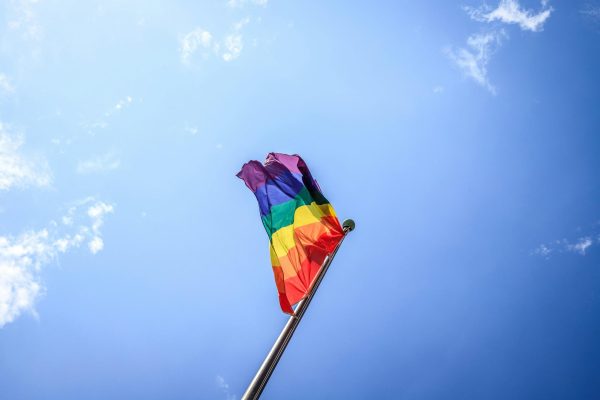Roe v Wade Overturned; A Look Into What This Means for Womens’ Rights
June 24 Roe v Wade was overturned by SCOTUS which altered the half century law granting women the right to abortions. How will this affect the future of women in America and the world?
1973 marked a prominent advancement in American women’s history: Roe v Wade. The Supreme Court of the United States (SCOTUS) case Roe v Wade granted women federal protection to have abortions during the first two trimesters of pregnancy. This allotted women a choice in a decision which would drastically impact the rest of their lives, along with a sense of sexual freedom.
The court ruling declared during a woman’s first trimester, the woman could make her own choice about abortion. During the second trimester, the state may regulate abortion only if it impacts the health of the woman negatively, and finally during the third trimester, the state has the ability to prohibit abortion to support the potential life of the fetus, unless the woman’s life is endangered.
Two trimesters, 26 weeks, was the time given to a woman to make an incredibly difficult and life-changing decision, one that requires emotional, financial, and other securities.
On June 24, 2022, Roe v Wade was overturned by the Supreme Court.
Now, the time given to the woman to make a choice is as little as zero weeks, depending on the discretion of the state.
To put it into perspective, oftentimes women do not know if they are pregnant until at least 12 weeks.
Throughout the U.S., 13 states have laws in place which were “triggered” once Roe was overturned, making the illegalization of abortion happen almost immediately.
On Jan. 22, 1973, the Supreme Court ruled that abortion during the first trimester of pregnancy was a Constitutional right granted by the Fourteenth Amendment and that the “Fourteenth Amendment’s concept of personal liberty and restrictions upon state action includes a right of personal privacy…this right of privacy is broad enough to encompass a woman’s decision whether or not to terminate her pregnancy” (Cornell Law School). Since then, Americans have been working to destigmatize sex and offer more education and contraception, and will now see a reversal.
The current SCOTUS now argues that abortion is not a protection granted by the Constitution.
“The Constitution does not confer a right to abortion…Roe was egregiously wrong from the start. Its reasoning was exceptionally weak, and the decision has had damaging consequences. And far from bringing about a national settlement of the abortion issue, Roe and Casey have enflamed debate and deepened division,” Justice Samuel Alito said in an initial draft majority opinion.
Justice Alito references another case, the 1992 Planned Parenthood v Casey which was a segue into the overturning of Roe v Wade. The court disposed of Roe v Wade’s trimester system, regarding abortion, yet the core of Roe remained unchanged, thus a state may not prohibit any woman “from making the ultimate decision to terminate her pregnancy before viability” (NewYorkTimes).
“Abortion presents a profound moral question,” Alito wrote in the majority opinion. “The Constitution does not prohibit the citizens of each State from regulating or prohibiting abortion. Roe and Casey arrogated that authority. We now overrule those decisions and return that authority to the people and their elected representatives” (Deadline).
Despite some misconceptions, the overturning of Roe v Wade does not mean abortions will be illegal everywhere in the United States. Abortion is no longer federally protected, therefore states are given the right to make their own decision, under the jurisdiction of the state legislatures who are elected to represent the beliefs of the people. Many states will continue to provide aid to women seeking abortions, and help others in banned states who will need to travel across states which reject abortion rights.
In a May 2022 CNN poll, 66 percent to 34 percent said that they did not want Roe overturned.
“The majority would allow States to ban abortion from conception onward because it does not think forced childbirth at all implicates a woman’s rights to equality and freedom,” said the dissent by Stephen Breyer, Sonia Sotomayor and Elena Kagan (NationalPublicRadio).
Women now find safe abortions challenging to have in states which banned clinical abortions and the fear is that many women, especially underprivileged will turn to unsafe methods. Even though abortions provided by healthcare were made illegal in some states, this will not stop women from attempting to obtain abortions in other ways which are not deemed safe. But, there still are other options, such as the pill and traveling to other states.
Though, many women who get abortions are often statistically single and poor, for a study in 2019 from MarketWatch said that 75 percent of women who get abortions are low-income with nearly half being under the poverty level, and the distances to travel to an abortion clinic across the country may not be a feasible option.
The United States gave women rights to their own bodies for practically half a century. To suddenly take that away demonstrates to other countries how easy it can be to strip away the life-changing and life-threatening rights of women– this ruling sets a poor precedent for the future of women’s rights in the world.
Your donation will support the student journalists of East Lyme High School. Your contribution will allow us to purchase equipment and cover our annual website hosting costs.
